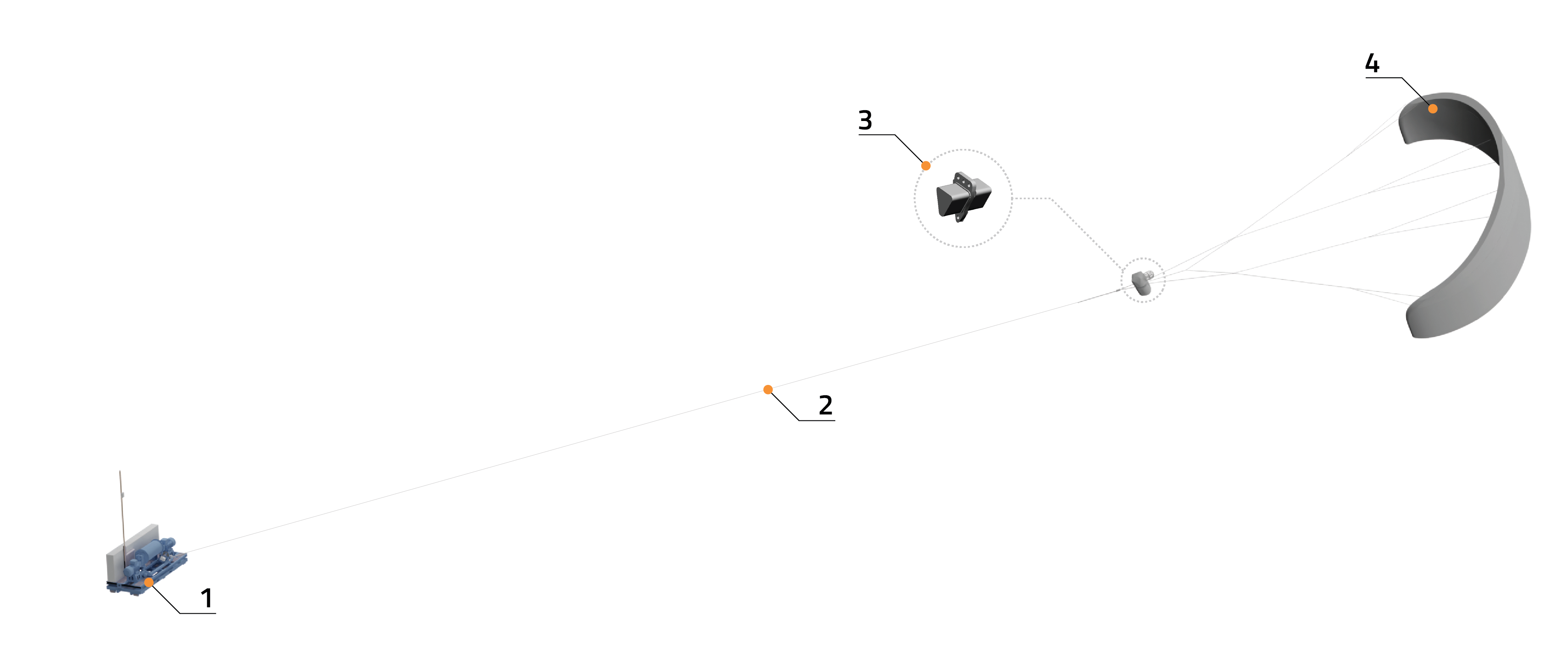Pumping = yo-yo = reeling.
The topic goal is an attempt to analyse the potential of scalability of the ground station in an economical way, considering pros and cons, and what is achieved.
Several topics of which this one mention the figure 15 from https://www.annualreviews.org/content/journals/10.1146/annurev-control-042820-124658. We can see an average of 92 kW with peaks at 400 kW. More recently a power curve was performed, presenting a comparable average power.
So some level of scalability was carried out.
Now, considering more precisely the ground station:
1. Ground Station (GS)
Converts the mechanical energy of the kite into electrical power and reels the kite in by using the generator as a motor.
- Dimensions:2.44 m x 2.60 m x 6.06 m
- Weight:9.6 t
- IP Rating:IP64
- Lifetime:25 years
The weight seems to be far higher than the weight of the nacelle of 2.2 tons, direct drive, for a wind turbine with equal rated power of 100 kW, or 4.6 tons, with a gear box. This difference of weight can be due to the “low speed of the tether extension” (see the text cited below). However the comparison should take into account of other positive or negative factors such like the ground station including the generator and which can be heavier as such, intermittent generation, energy consumption during reel-in phase by using the generator as a motor, the two last factors leading to the requirement of a more powerful generator in order to compensate them.
About the “low speed of the tether extension”:
Page 236:
While a kite wing, flying crosswind, is extremely efficient, the tether moves in
the tangential direction slowly. According to Loyd [21], the maximum power output
is provided at the tether extension speed, equal to one third of the wind speed, if
the tether is collinear with the wind (i.e., the speed is further reduced by the angle
with the horizon). The low speed of the tether extension requires high tether forces
to transmit the same amount of power. In a conventional design with the tether
unrolling from a drum, the drum has low RPM, a high-ratio gearbox is required to
increase the angular speed to 1,500–1,800 RPM, as required by conventional electric
generators. Thus a large part of the advantage that an AWECS has compared with
a conventional wind turbine is offset by the higher cost of the drive train. The drive
train constitutes 40% of the cost of the conventional wind turbine, according to [19,
p. 178].
This seems entirely relevant.
